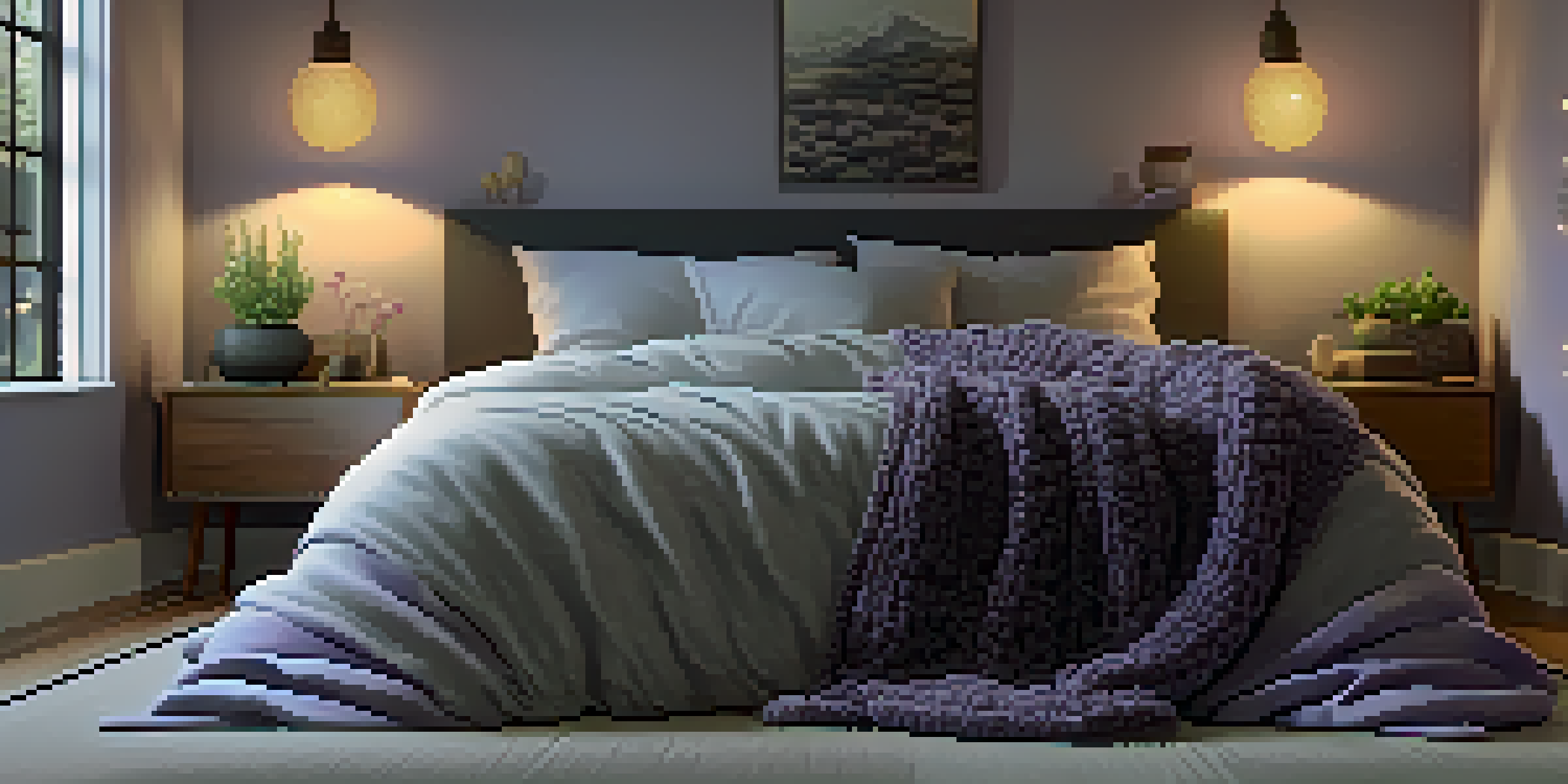How to Implement a Digital Detox for Better Sleep Hygiene

Understanding the Impact of Screens on Sleep Quality
In our tech-driven world, screens are everywhere, and their blue light can wreak havoc on our sleep cycles. When we expose ourselves to screens before bed, it interferes with the production of melatonin, the hormone responsible for regulating sleep. This disruption can lead to difficulty falling asleep, restless nights, and waking up feeling groggy.
The greatest weapon against stress is our ability to choose one thought over another.
Imagine trying to fall asleep while a bright light is shining in your eyes—it’s no wonder we struggle to drift off! Studies show that even just an hour of screen time before bed can significantly impact how quickly we fall asleep and the quality of our rest. If you're looking for better sleep hygiene, understanding this connection is the first step.
By recognizing how screens affect our sleep, we can take actionable steps towards a digital detox that enhances our nightly routines. It’s time to put down our devices and prioritize the rest our bodies crave.
Setting Boundaries with Screen Time
One of the most effective ways to start your digital detox is by establishing clear boundaries around screen time. This means deciding when you’ll put away your devices each day, ideally an hour or more before bedtime. Consider creating a 'no screens' rule in your bedroom to reinforce this boundary.

Think of it like a personal curfew for your devices. This allows your mind to unwind and prepares your body for a restful night’s sleep. You might also find it helpful to set specific times during the day for checking emails or social media, so you’re not constantly distracted by notifications.
Screens Disrupt Sleep Quality
Exposure to screens before bedtime interferes with melatonin production, making it harder to fall asleep and leading to groggy mornings.
Setting boundaries helps reshape your relationship with technology. By consciously limiting your screen time, you’ll not only improve your sleep hygiene but also create more opportunities for activities that promote relaxation and well-being.
Creating a Relaxing Bedtime Routine
A relaxing bedtime routine can signal to your body that it’s time to wind down, making it easier to transition into sleep. Instead of scrolling through your phone, consider activities like reading a book, practicing meditation, or even stretching. These alternatives can help calm your mind and prepare you for sleep.
Sleep is the best meditation.
Using calming scents, such as lavender, can further enhance your routine. Imagine sipping a warm cup of herbal tea while listening to soft music; this can create a peaceful atmosphere that encourages relaxation. The goal is to carve out a little time each night to engage in activities that soothe you.
Consistency is key. By establishing a routine that you follow each night, your body will start to recognize these signals and respond with improved sleep quality. Over time, this can lead to more restorative and deeper sleep.
Designing a Sleep-Friendly Environment
Your sleep environment plays a crucial role in your overall sleep hygiene. Start by making your bedroom a sanctuary for sleep—think comfortable bedding, dark curtains, and a cool temperature. Reducing noise and eliminating distractions can also help you create a more restful space.
Consider using blackout curtains or a white noise machine if external light and sounds are an issue. This can help create a serene atmosphere conducive to sleep. The more comfortable and inviting your sleep environment is, the less likely you will be to reach for your devices.
Establish Screen Time Boundaries
Setting clear limits on screen time, especially before bed, can help improve sleep hygiene and create space for relaxation.
Remember, your bedroom should be a place dedicated to rest. By transforming it into a sleep-friendly environment, you’ll be setting yourself up for a better night's sleep and a successful digital detox.
Incorporating Mindfulness and Meditation
Incorporating mindfulness and meditation into your daily routine can significantly enhance your digital detox journey. These practices help quiet the mind and reduce anxiety, making it easier to let go of the day’s stresses. Simple techniques like deep breathing can prepare your body for sleep, acting as a natural sedative.
You might start with just a few minutes of guided meditation or mindfulness exercises each evening. Imagine sitting in a quiet space, focusing on your breath, and allowing your thoughts to drift away. This practice not only benefits your sleep but can also improve your overall mental well-being.
As you become more in tune with your mind and body, you’ll likely find it easier to detach from your devices. This newfound clarity can lead to better sleep hygiene and a more fulfilling night’s rest.
Exploring Alternatives to Digital Entertainment
Instead of defaulting to screens for entertainment, explore alternatives that don’t involve technology. Board games, puzzles, or even journaling can provide engaging ways to unwind without the bright light of a screen. This shift not only benefits your sleep hygiene but also fosters deeper connections with family and friends.
Think about how enjoyable it can be to share a laugh over a game or reflect on your day in a journal. These activities can enrich your evenings and serve as a pleasant distraction from the digital world. Plus, they can help you cultivate a more mindful approach to leisure.
Create a Relaxing Bedtime Routine
Engaging in calming activities before sleep, like reading or meditation, signals your body to unwind and enhances sleep quality.
By embracing screen-free alternatives, you’ll likely find yourself more relaxed and ready for sleep. This simple change can make a significant difference in your overall sleep quality.
Tracking Your Progress and Adjusting Habits
As you embark on your digital detox journey, it’s essential to track your progress and adjust your habits accordingly. Consider keeping a sleep journal to monitor how your changes impact your sleep quality. Take note of how you feel after reducing screen time and incorporating new routines.
Reflecting on your experiences can provide valuable insights into what works best for you. For instance, you might discover that reading before bed helps you sleep better than meditation. This self-awareness empowers you to tailor your detox plan to suit your unique needs.

Remember, this is a journey, not a race. Be patient with yourself and allow time to see improvements. Tracking your progress can motivate you to stick with your digital detox and reap the benefits of better sleep hygiene.